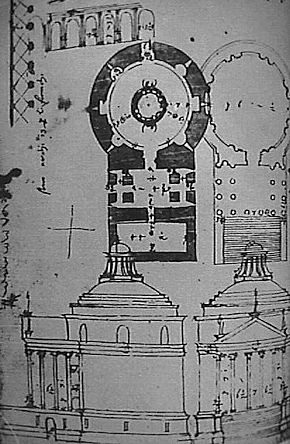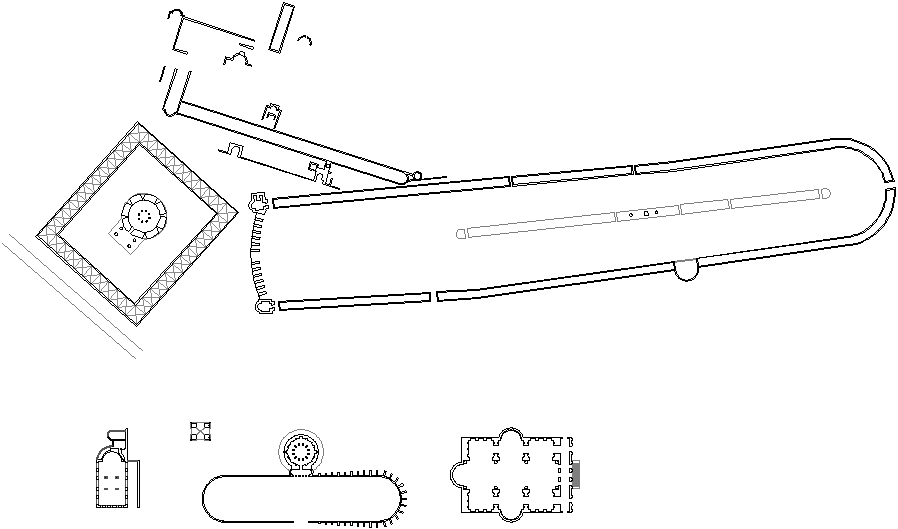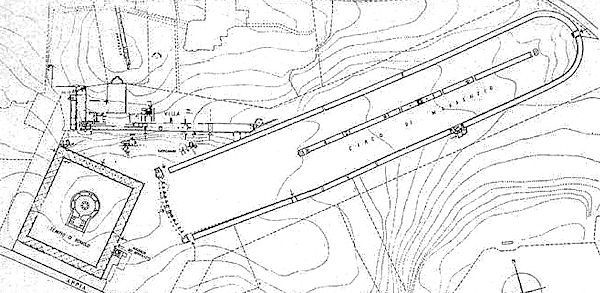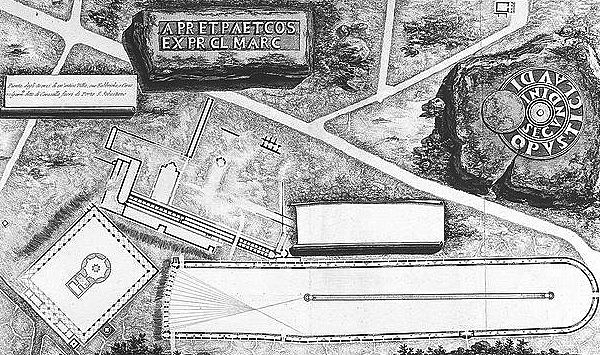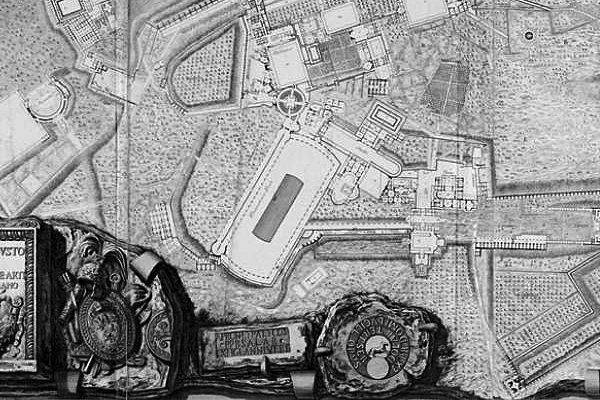Quondamopolis | Architecture post Semiquincentennial |
|
| 3 February | 2014.02.03 13:48 |
Still in the process of reading Theories and History of Architecture (again). Now over a week ago, one of the illustrations collected toward the end of the book struck a new register of recognition.
|
Palladio's reconstution is of the temple that once stood atop the mausoleum of Romulus (son of Maxentius), which forms part of the Imperial (munus) complex along the Appian Way.
Thanks to Palladio's drawing, I can more accuratly draw the plan of the mausoleum/temple. The plan I had been using (from an image found online) was not clear enough to make a definitive rendition of the plan.
Coincidentally, and now also over a week ago, I found a detailed eighteenth-century engraving of the Maxentian complex plan, incorrectly placed within a wiki collection of G.B. Piranesi's images from Le antichitŕ Romane:
|
|
On 3 February 1544, the sarcophagus of Maria was discovered (very likely while the old basilica was being demolished to make way for the new/present one). The sarcophagus of Maria may well be the last substantial imperial artifact of (the city of) Rome, and after an illustrious title page and a frontispiece, it is an image of the sarcophagus of Maria that Piranesi uses to begin his Campo Marzio publication. In a most elegantly covert way, Piranesi began the 'history' of the Campo Marzio with what is really it's ending, and what is probably the world's greatest designed architectural inversionary double theater goes on from there. But there is a strange fabrication going on there too.
|
Since this engraving is not by Piranesi, it is difficult to discern who the real engraver is. My guess it that it is by Piranesi's son, Francesco, based on the engravings similarity to Francesco's plan of Hadrian's Villa.
|
3200d
| Quondam © 2017.11.28 |
